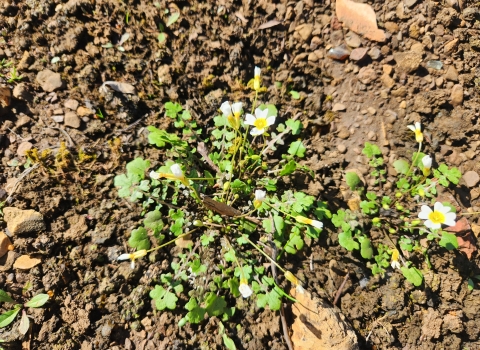The sight of a migrating songbird in a backyard or shorebird along a beach brings joy to millions of Americans each year. Our national passion for birdwatching also puts billions of dollars into the economy through our purchases of bird food, binoculars and travel to see our favorite birds. Yet many of the birds we love are in trouble from shrinking habitats or threats such as invasive species invasive species
An invasive species is any plant or animal that has spread or been introduced into a new area where they are, or could, cause harm to the environment, economy, or human, animal, or plant health. Their unwelcome presence can destroy ecosystems and cost millions of dollars.
Learn more about invasive species . Thanks to the Neotropical Migratory Bird Conservation Act (NMBCA), however, our migrating birds will benefit to the tune of $18 million in federal and matching funds.
The NMBCA provides critical funding each year for bird conservation and research throughout the Western Hemisphere and is the only source of federal funding solely dedicated to the conservation of our shared migratory bird heritage. This year, over $3.8 million in federal funds will be matched by more than $14 million in partner contributions going to 31 collaborative conservation projects in 19 countries across the Americas.
“In order to protect America’s birds, we have to help them wherever they breed, migrate or spend the winter. That includes North, Central and South America,” said Service Acting Director Greg Sheehan. “These projects, involving dozens of partners through many countries and habitats, show we continue to honor our commitment to protecting birds wherever they live.”
The NMBCA grants will fund projects to conserve migratory bird habitat, engage local communities in bird habitat protection and strengthen international relations, while raising awareness of the importance of bird conservation.
There are 386 species of neotropical migratory birds that migrate to and from the United States each year, including songbirds, shorebirds and birds of prey. These birds provide critical functions that we rely on, such as pollinating and dispersing seeds of plants, keeping insect and rodent populations in balance and providing early warnings of environmental contamination.
The NMBCA program is specifically designed to send at least 75% of its funding to projects in Latin America and the Caribbean, where habitat loss and other threats to migratory birds that spend part of their lives in the United States are significant and conservation funding is scarce. Because the program works throughout the Western Hemisphere, it is able to support the full life-cycle needs of the birds. For instance, the NMBCA funds work for cerulean warbler and wood thrush on its breeding grounds as well as key stopover and wintering sites in Central America and South America.
Since 2002, the NMBCA has provided more than $58.5 million in grants to support 510 projects in 36 countries. These projects have positively affected more than 4.2 million acres of bird habitat and spurred partnerships on multiple levels contributing an additional $221.9 million. This year’s project highlights include:
JE Canyon Ranch
The Colorado Cattlemen’s Agricultural Land Trust will work with local landowners to protect and support multi-generational ranching on 48,817 acres of shortgrass prairie grassland habitat and riparian riparian
Definition of riparian habitat or riparian areas.
Learn more about riparian areas. This property is used by dozens of species of neotropical migratory birds including conservation priorities species, such as Brewer’s sparrow, lark bunting and long-billed curlew. Grazing on ranches is a critical conservation tool for providing quality habitat for grassland birds.
Community Farming in Vermont for Grassland Birds
This project will engage local landowners and managers with information about individual bobolinks breeding on their property, which will help adapt land management practices to rebalance farming and the needs of grassland birds. Partners will assess the annual life-cycle of individual bobolinks by collecting data both while on the breeding grounds and through tracking devices for the entire migration to and from southern South America. They will use a community-based approach — integrating volunteers and undergraduate students in collecting and disseminating these data.
Conservation Action for Cerulean Warbler in Canada
Bird Studies Canada aims to improve the cerulean warbler’s conservation status in Canada, focusing primarily on the Carolinian Region, where the species is most threatened, but also working with stakeholders in the Frontenac Arch to ensure this population remains stable. They will achieve this by: working with landowners to reduce threats and to conserve or enhance habitat for cerulean warbler and other mature forest-dependent birds at risk; working with partners to maintain or enhance the habitat available for cerulean warbler and; implementing long-term recovery monitoring to identify threats, to prioritize sites for conservation, and to track recovery and to monitor project success.
For more information on the 2017 funded projects and previous years, please visit: https://www.fws.gov/birds/grants/neotropical-migratory-bird-conservation-act.php.



